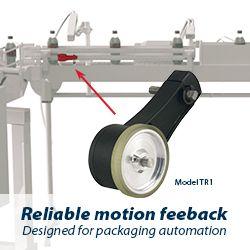As California's labor shortage grows, farmers race to replace workers with robots
Robotics experts dismiss Musk's call for AI regulation
Elon Musk: 'Robots will be able to do everything better than us'
Professor Michael Gennert Looks Back at a First Decade of Robotics Engineering Program
The Drone Racing League (DRL) Builds The Fastest Racing Drone
Is robotics the key to repairing societal infrastructure?
How a One-Man Team from California Won NASA's Space Robotics Challenge
Spider robots on the move for additive manufacturing
New Army technology enables simultaneous multiple drone control
Teaching Robots to 'Feel with Their Eyes'
Torc Robotics unveils self-driving system for consumer cars
Fastbrick signs a deal with Caterpillar to develop bricklaying robots
ETH zurich builds DFAB HOUSE using robots and 3D printers
The one law of robotics: Humans must flourish
A Job Plan for Robots and Humans
Records 901 to 915 of 1677
First | Previous | Next | Last
Featured Product

Model TR1 Tru-Trac
Robotics and Automation - Featured Company

